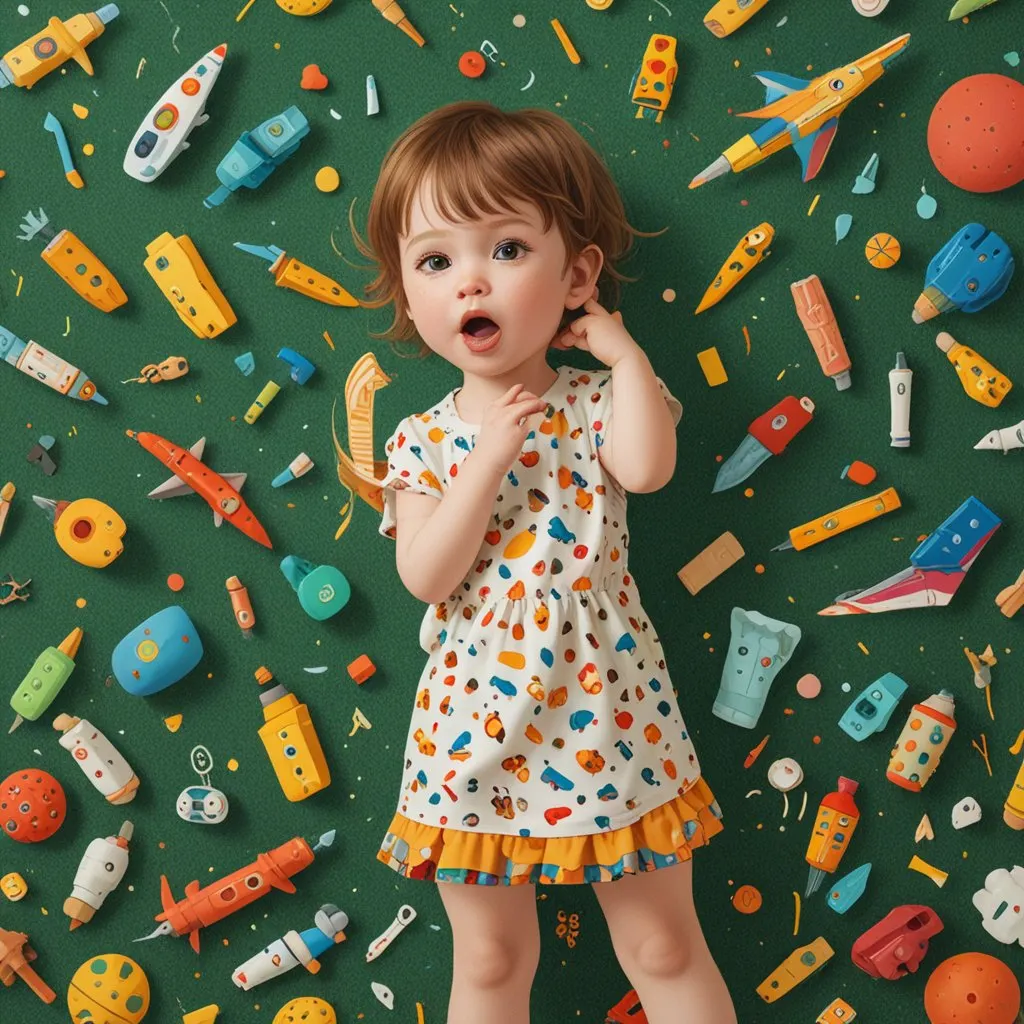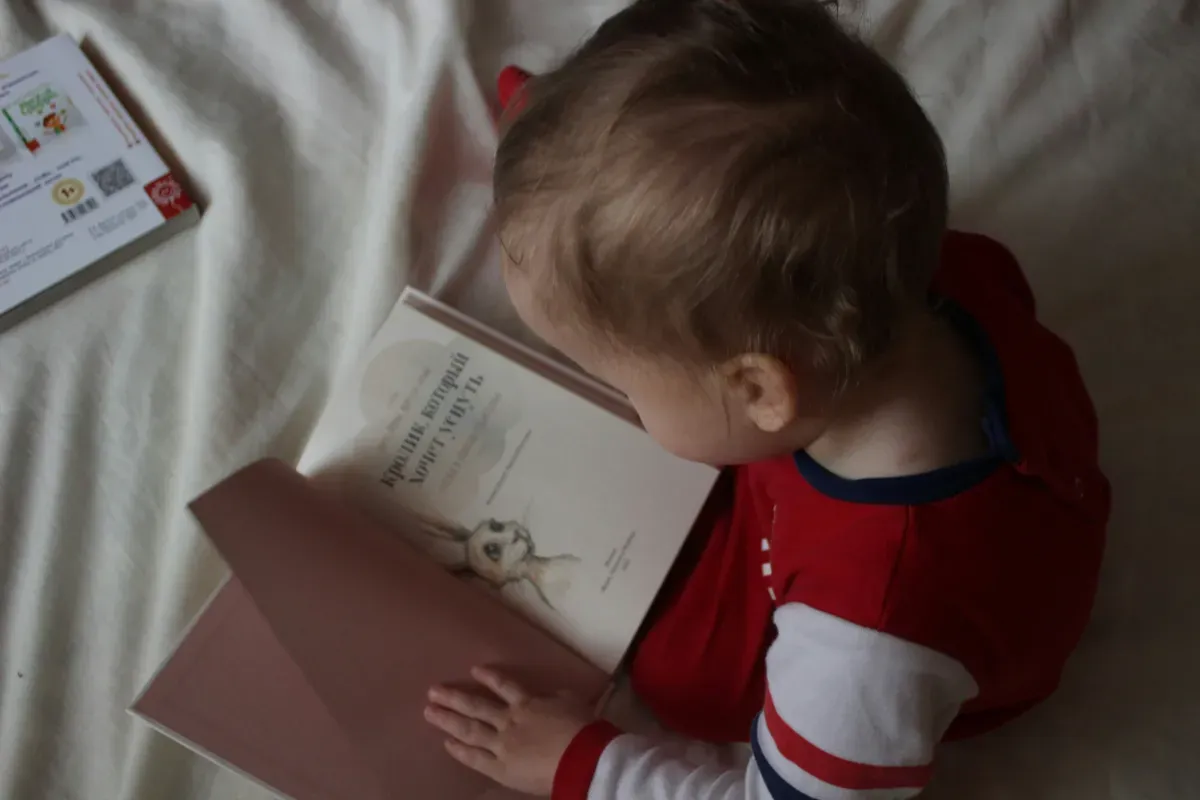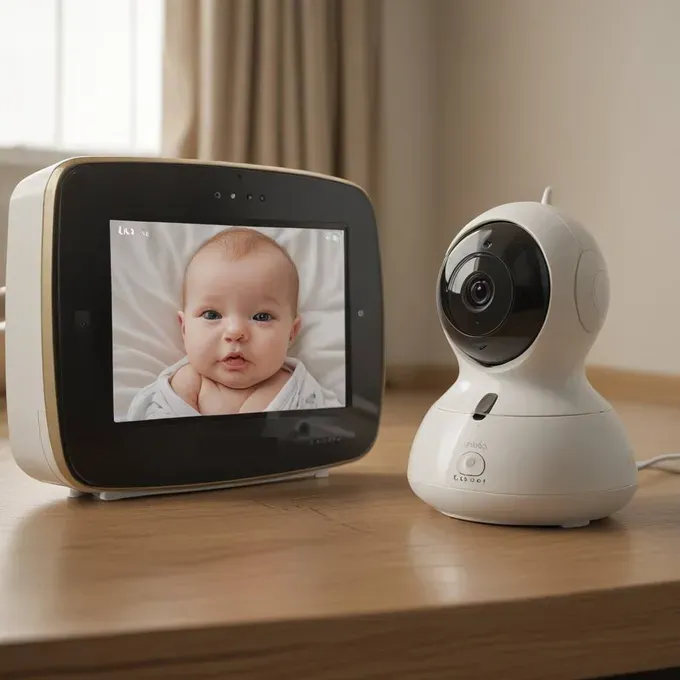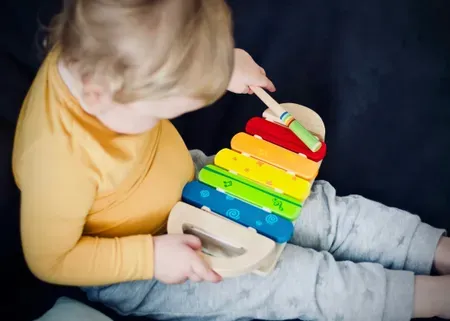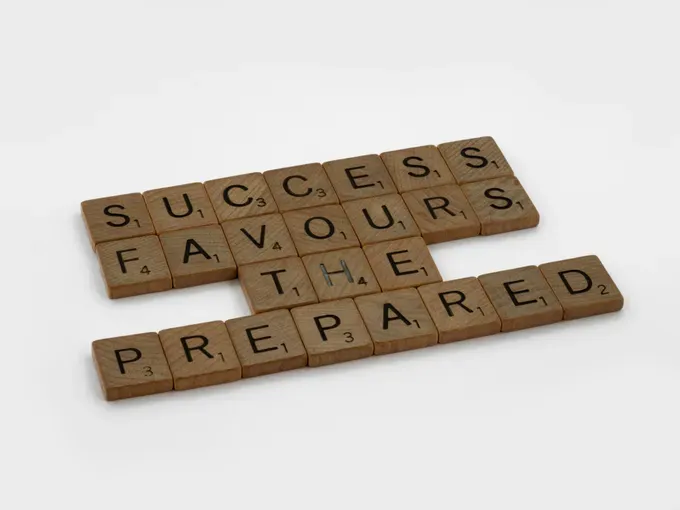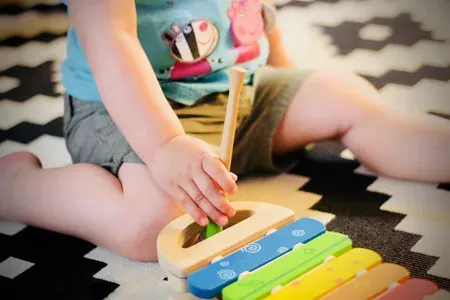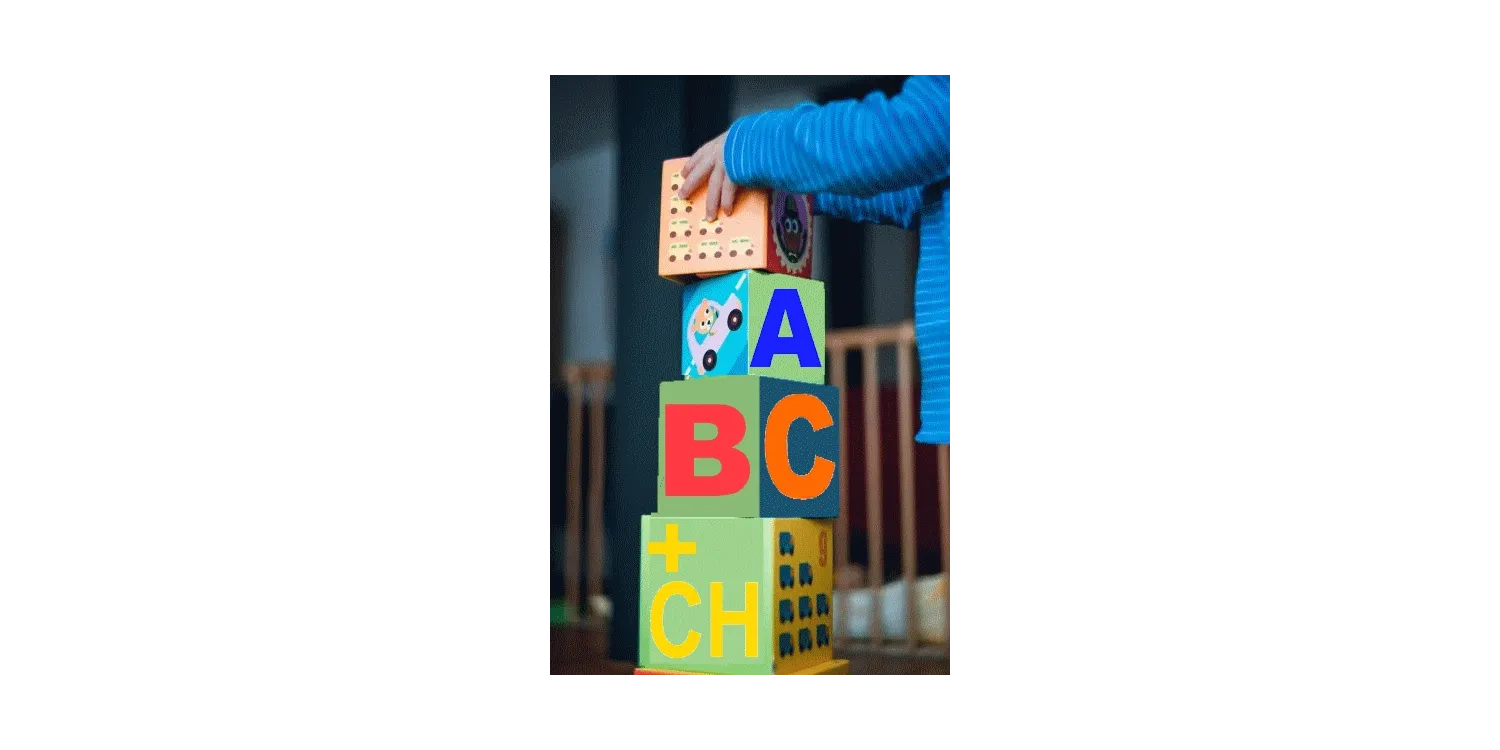Prenatal Soundscapes: Building Neural Networks Through Womb Acoustics
Prenatal Sound Exposure: How Acoustic Environment Shapes Fetal Brain Development | Learning Time
Key Highlights
- Did you know that your baby's auditory system starts developing at just 18 weeks? This means they can hear sounds like your heartbeat and voice!
- Hearing sounds in the womb is very important for your baby's thinking and emotional growth.
- From calming music to fun stories, moms-to-be can use sounds to connect with their babies before they are born.
- While sound stimulation is good, it’s important to keep the sound levels safe and not put headphones directly on your belly.
- This blog looks at the amazing process of hearing development in fetuses and shares helpful tips for improving your baby's prenatal sound environment.
Introduction
The prenatal environment is full of sights and sounds for a growing baby. Sound is very important for their early development. Learning about how hearing develops in the womb gives us valuable information. It shows how exposure to sounds can affect their thinking and feelings. This, in turn, can impact their quality of life.

The Science of Fetal Hearing Development
The growth of a fetus's hearing system is complicated. This process starts in the early weeks of pregnancy. Simple structures in the embryo change into a detailed system that allows hearing.
By the second trimester, the inner ear is fully developed. The cochlea, found in the inner ear, turns sound vibrations into electrical signals. This amazing change helps the fetus begin to hear sounds from outside.
How Early Can a Fetus Hear?
A common question that expectant mothers ask is, "When does my baby start hearing?" The baby's auditory system begins to develop early in pregnancy. Usually, a fetus can start to hear sounds around 18 to 20 weeks of gestational age.
It's good to know that hearing in the womb is not the same as hearing outside. The amniotic fluid, the walls of the uterus, and the mother's body block and soften outside sounds. They filter out higher frequencies.
As pregnancy goes on and the auditory system grows, the fetus can hear sounds better. This includes lower frequencies, like the mother's voice and her heartbeat.

Stages of Auditory System Development in the Womb
During the prenatal period, the auditory cortex, which helps us process sound, grows a lot. You can see this in the way the fetal heart rate reacts to sounds.
Fetuses between 25 to 27 weeks of gestation show changes in their heart rate when they hear different sounds. This suggests their brains are beginning to notice and process sounds.
This early activity is important. It helps build the foundation for language skills and other brain functions that rely on good auditory processing.
Influence of External Sounds on Fetal Behavior
 The womb may appear to be a quiet space, but it is full of sounds from inside and outside the mother's body. These sounds, known as acoustic stimuli, can influence how the fetus behaves.
The womb may appear to be a quiet space, but it is full of sounds from inside and outside the mother's body. These sounds, known as acoustic stimuli, can influence how the fetus behaves.
Studies have shown that fetuses respond to different sounds. They react to the mother's voice, music, and even loud noises by changing their movements and heart rates. These reactions highlight the need for a healthy and stimulating prenatal sound environment.
Types of Sounds That Reach the Womb
The mother's body works like a natural filter. Many outside sounds can reach the womb.

Each sound gives different types of acoustic stimulation:
- The mother's voice is a key sound that the fetus hears. Its low frequency makes it travel easily through the amniotic fluid and tissues.
- The mother's heartbeat is a constant sound. It provides a calming and rhythmic background.
- Music, especially soft melodies and lullabies, can also reach the womb. This may help the baby relax and get started with listening.
- Every day sounds, like traffic, voices, and noises at home, can reach the womb as well. This allows the fetus to have different acoustic experiences.
However, too much noise can harm the fetus's developing auditory system. Loud and long noises, like those from concerts or construction sites, should be avoided.
Impact of Mother's Voice and Heartbeat
The most important sound a fetus hears is their mother's voice. Research shows that newborns can tell and prefer their mom's voice over others just hours after they are born. This shows how much being exposed to it before birth can matter.
Another comforting sound for a developing fetus is the mother's heartbeat. These steady heartbeat sounds provide security. They create a rhythm that helps the auditory system develop.
Together, the mother's voice and heartbeat are key sounds. They play an important role in shaping the fetus's first listening experiences. This helps create a feeling of closeness and connection.
Enhancing Bonding Through Sound
 Sound offers a special way for parents to connect with their baby before birth. This helps to create a strong and loving bond.
Sound offers a special way for parents to connect with their baby before birth. This helps to create a strong and loving bond.
When expectant mothers include sound in their daily lives, they can improve their baby's prenatal environment. It also helps their baby's hearing to develop. This shared world of sound allows for early communication and helps create a sense of closeness that can last long after birth.
Communicating with Your Baby Before Birth
Prenatal music exposure has many benefits, and when mothers join in, it adds something special. When expectant mothers sing lullabies, play instruments, or listen to calming music, they share their favorite tunes while calming their babies. This can help build a strong emotional bond between them.
Vibroacoustic stimulation was once thought to be good for prenatal stimulation. Now, it is not recommended because it could harm the baby's developing auditory system. Putting sound and vibration directly on the abdomen can make noises that are too loud and intense for the fetus.
Instead, it is better to create a mix of sounds from the mother's voice, heartbeat, and soft music. This creates a safer and enjoyable space for the baby as they grow.
Practical Tips for Expectant Mothers
Creating a fun and welcoming sound environment for your baby during pregnancy is easy.
Here are a few simple things you can do:
- Talk to your baby: Share your day, thoughts, and feelings, or read stories out loud. Your baby enjoys hearing your voice.
- Play music: Let your baby hear different types of music, but keep the sound levels safe. Calming tunes or nature sounds are great for relaxing.
- Sing lullabies: This lovely tradition has been passed down through generations. It helps you connect with your baby through music.
It's important to be consistent. Adding these habits to your daily routine can really help your baby's growing sound environment.
Cognitive and Emotional Benefits of Prenatal Sound Exposure
 A rich and lively prenatal sound environment helps more than just hearing skills. It also brings important benefits for the child’s thinking and feelings.
A rich and lively prenatal sound environment helps more than just hearing skills. It also brings important benefits for the child’s thinking and feelings.
Research shows that sound exposure before birth can boost language skills, enhance memory, and lead to calmer babies. These early advantages show how valuable a good prenatal sound experience can be.
Early Cognitive Development Through Hearing
The brain can change and adapt, which is called neuroplasticity. This ability is most noticeable in early life. When a baby hears sounds before birth, it helps shape the brain pathways needed for hearing and language.
Listening to music uses many parts of the brain. This helps with important thinking skills like recognizing patterns, improving memory, and staying focused.
Giving a fetus a variety of interesting sounds sets up a good base for future learning and brain development.
Emotional Bonding and Its Long-Term Effects
Hearing sounds in the womb can help with both thinking and feelings. When a baby hears their mother’s voice and heartbeat, it makes them feel safe and close to her. This connection is very important for healthy emotions.
What happens before birth can affect how a person connects with others as they grow. Research shows that babies who hear positive sounds during this time usually have healthier relationships, can manage their feelings better, and enjoy a better quality of life.

Research Insights on Prenatal Hearing
Research shows that sound affects how a baby grows before birth. It reveals interesting details about how a baby hears in the womb.
Thanks to new studies that focus on fetal heart rate and other advanced imaging methods, scientists are learning how important sound is. It helps to shape the brain as it develops and can have lasting effects later in life.
Key Studies and Their Findings on Fetal Hearing
One early study on prenatal hearing used a simple but good method: fetal heart rate monitoring. The researchers found that fetuses as early as 25 weeks showed a change in heart rate when they heard different sounds. This shows that they can hear and respond to sounds.
With new technology, researchers can do more than just monitor heart rates. Neuroimaging studies, which you can find on Google Scholar, help us understand how parts of the brain, like the auditory cortex, react to sound.
Many of these studies have their full text available online. This adds to the growing evidence that sound affects fetal development. It also highlights how important it is to create a good prenatal sound environment. These results lead to future studies that can look into the long-term effects of prenatal sound exposure.
Latest Advances in Prenatal Audiology
Prenatal audiology is a branch focused on studying how hearing develops before birth. This area has seen great progress. Researchers can now closely examine fetal brain activity when they hear sounds. This gives us helpful information about how the auditory cortex grows and handles sound.
One interesting study uses safe methods like fetal magnetoencephalography (fMEG). This technology helps scientists detect the small magnetic fields from electrical activity in the fetal brain. It shows us in real-time how the auditory cortex reacts to sound.
These new methods in prenatal audiology are crucial for understanding how hearing develops. This information leads to better ways to find hearing issues early. It helps create more focused treatments for those who need them.
Parental Strategies for Stimulating Fetal Hearing
As parents discover how amazing fetal learning can be, they want to help their baby's growth in positive ways. Luckily, adding sound stimulation to their daily routine is easy. They don't need special tools or fancy methods. Just some simple and thoughtful actions can change the prenatal sound environment. This can create a lively world full of sensory experiences for the baby in the womb.
Safe Sound Levels and Duration
Sound stimulation can help in many ways. However, it's important to know that fetuses hear better than adults and are sensitive to noise. This is why keeping sound levels safe is very important. Being around loud noises or too much noise for a long time can hurt their developing auditory system.
Experts suggest keeping noise below 70 decibels (dB). That’s about the same as the sound of a vacuum cleaner or a hairdryer. It’s also good to spend less time in loud places.
Think about your baby's surroundings and make smart choices. This can protect their delicate ears and ensure a healthy balance of sound.
Recommended Practices for Sound Exposure
Prenatal music exposure is not hard to do. Bringing in different sounds every day can give your baby a lot of sound stimulation. Here are some good ideas:
- Choose calming music: You can use classical music, soft melodies, and nature sounds to help make a soothing prenatal environment.
- Sing lullabies and talk to your baby: Your voice is a strong tool to bond with your unborn child.
- Read aloud: Reading books lets you share your love for language and helps your baby hear the rhythm of speech.
Always keep an eye on the sound levels. Avoid anything too loud or intense. The aim is to create a nice and rich sound environment for your baby to enjoy.
Role of Music in Fetal Brain Development
 Music, with its charming tunes and complex beats, is not just a way to have fun; it can also help a baby's growing brain.
Music, with its charming tunes and complex beats, is not just a way to have fun; it can also help a baby's growing brain.
Studies show that exposing babies to music early can strengthen connections in the brain related to language, memory, and feelings. This highlights how important music exposure is for brain development.
Choosing the Right Music for Prenatal Stimulation
Prenatal music exposure is usually good for babies. However, just playing any kind of music is not enough. Picking the right music can help your baby's developing auditory system even more.
Soothing music, like classical tunes or lullabies, is often suggested because of its calming effects. Yet, playing different types of music can also enhance their experience and boost their ability to process sounds.
Music interventions are becoming more popular. These are special programs with planned music sessions for prenatal stimulation. Still, it is important to be careful and talk to a healthcare provider before adding them to your prenatal routine.
The Mozart Effect: Myth or Reality?
The "Mozart Effect" is a popular idea that listening to classical music can make you smarter. This topic has sparked a lot of discussions. Some studies suggest that listening to Mozart's Sonata for Two Pianos in D Major might temporarily help spatial-temporal reasoning skills. However, there is no solid proof that this effect leads to lasting improvements in thinking skills.
Many experts say that the evidence is inconsistent and similar findings have not been repeated in other studies. Because of this, they believe the "Mozart Effect" might be more of a myth rather than a fact. These views remind us to question such claims and focus on a more complete approach to prenatal stimulation.
Sensory Play and Its Impact on Prenatal Learning
Sensory play is important for a child's growth and can start even before they are born. People often think of sensory play as involving touch, taste, and smell. However, sound experiences are also very important in early learning.
Parents can help brain development by adding various sounds to the prenatal environment. This helps create a mix of auditory stimuli that can spark curiosity in the womb.
Different Forms of Sensory Play
Sensory play involves using a child's senses. In the prenatal environment, sound is very important. Besides the constant sounds of the mother's voice and heartbeat, adding different sounds can make the experience even better for the developing fetus.
Playing relaxing music, singing lullabies, or reading stories can help create a rich sound experience in the womb. These sounds can engage the developing brain. They support connections in the brain areas linked to language, memory, and emotions.
For prenatal sensory play to work well, it is important to offer a range of sounds. This helps capture the fetus's attention and encourages interaction without overwhelming their developing auditory system.
Creating a Stimulating Environment for Your Unborn Child
A stimulating prenatal environment does not need fancy setups or costly gear. Simple activities added to your daily routine can provide your unborn child with helpful sensory experiences.
Talking to your baby, sharing your day, or describing what you see helps them learn the basics of language. Playing music brings in different tunes and beats. Gentle rocking can also offer a soothing feeling.
These actions come together to make a rich sensory space that inspires curiosity. This helps brain development, even before birth. By creating a supportive prenatal environment, parents encourage their child's early learning and lay the foundation for a lifetime of discovery.

Storytelling to the Unborn Child
Storytelling is a tradition that has been part of human culture for a long time. It can bring great joy and comfort to everyone, no matter their age. It connects us by sharing experiences, using our imagination, and through the power of words.
Even before birth, babies can sense the calming flow of a story. Reading out loud to your unborn child opens up many possibilities. It can spark their imagination and help them develop a love for language.
Benefits of Narratives for Fetal Learning
Fetal learning was once a mystery, but now it's seen as important for development. Studies show that fetuses can learn and remember sounds they hear in the womb. This shows how early sounds matter for growth.
Storytelling is special for fetal learning. When unborn babies hear stories, with their rich words and different sentences, it can help them with language processing and growth.
These early language experiences build a strong base for reading and writing skills later. By listening to stories, even before they are born, babies start to explore language. This prepares them for the complexities of communication.
How to Engage Your Baby with Stories
Engaging your baby with stories during pregnancy is a great way to connect and help their growing minds. Pick books that have interesting stories, rhymes, or simple lines that repeat.
Your voice is very strong in catching their attention. Change your tone, pitch, and speed to make storytelling more exciting. You can also act like different characters by changing your voice and expressions for fun.
It's important to be consistent. Take some time each day to read. This will become a special routine you and your baby will look forward to.
Technology and Monitoring Fetal Responses to Sound
Technological advances are changing how we understand the prenatal world. New monitoring devices let us see how fetuses respond to different stimuli. This gives researchers and parents important information about how senses develop.
These advances help us check on fetal health, making sure the baby grows safely and healthily. They are strong tools, connecting the time in the womb to the outside world.

Innovations in Prenatal Sound Monitoring
Prenatal sound monitoring has greatly improved because of new technology. These devices do more than just amplify sounds from the womb. They give detailed insights into how fetuses respond to different sounds.
With advanced ultrasound technology, we can closely observe how fetuses move and react to outside noises. There are also non-invasive methods, like fetal magnetoencephalography (fMEG), which help researchers map brain activity. This shows how the auditory cortex processes various sounds.
These advances in prenatal sound monitoring continue to grow. They offer a great way to find potential hearing impairments early on. They also provide useful information to help with interventions and improve outcomes.
Apps and Devices for Expectant Parents
The growth of mobile technology has led to many new prenatal apps and tools for expectant parents. These tools help track fetal development and make the pregnancy journey easier.
Parents in the United States and other countries use apps that play calming music and lullabies. They also use devices that check the baby's heartbeat. This technology helps parents connect with their unborn children. However, it’s important to use these apps and devices wisely.
Always talk to healthcare providers for guidance on how to use them safely. Be careful of products that claim to influence fetal development or intelligence without solid proof.

Cultural Perspectives on Prenatal Sound Exposure
Cultural beliefs and practices about pregnancy and childbirth are very different around the world. Every culture has its own special ways to celebrate becoming a parent. This can include traditional songs and lullabies. There are also specific sounds that people think help the baby’s health.
These varied views give us an interesting look into the common human experience of having new life. They show the deep link between sound, culture, and the beliefs that shape our lives.
Global Practices in Communicating with the Unborn
Global practices about pregnancy show many cultural views on talking to the unborn child. Various cultures have traditions that use sound to interact with and care for the baby.
In some cultures, mothers wear bells or chimes that make soft sounds when they move. It is believed that these soothing sounds help the baby feel calm. Traditional lullabies, often given from parents to children, hold not only beautiful tunes but also important stories and values.
These different practices, influenced by many years of beliefs and traditions, show how music and sound are used to communicate with the unborn child. They also reflect the rich experiences of people around the world.
Cultural Beliefs and Their Scientific Basis
Many cultural beliefs about prenatal practices have been passed down for years. Now, modern science is starting to look into the reasons for these old traditions. Researchers are studying whether some sound-based activities, like singing lullabies or playing calming music, can truly affect fetal development.
Some studies say that these activities might help soothe the fetus. They could lower stress levels and create a feeling of well-being. These results offer early support for the idea that cultural practices, developed over many generations, might have real scientific grounding.
However, we need more research to understand how cultural beliefs, prenatal practices, and fetal development are connected. By combining traditional knowledge with scientific research, we can create a better and more caring approach to prenatal care.
Preparing for Parenthood Through Sound Interaction
As expectant parents go through the life-changing experience of pregnancy, they often look for ways to connect with their unborn child. Engaging with sound is a simple and special way to start building a bond in the womb. This connection helps create a strong link that grows even deeper after birth. It provides a wonderful start to parenthood and enhances the lives of both the parent and the child.
Building a Connection from Pregnancy
Prenatal bonding is a special connection between a parent and their unborn child during pregnancy. It is a personal experience that has many layers. Touching the mother's belly is important, but sound matters too.
The mother's voice is a comforting presence for the baby inside the womb. When she speaks or sings to the baby, even early in the pregnancy, it creates a special way to communicate.
This early sound interaction helps the baby feel familiar and safe. It nurtures the bond between them and sets up a strong connection that will grow even more after birth.
Transitioning from Prenatal to Postnatal Bonding
Just like the womb was a safe place for connection before birth, the outside world is a chance to make that bond even stronger. After birth, bonding with your baby depends a lot on touch, eye contact, and, importantly, sound.
Babies are used to their mother’s voice from inside the womb, so they feel comforted when they hear it again after birth. When you talk, sing, and read to your newborn, you help deepen the bond that started while they were still in your belly. This also helps them adjust to the new world around them.
These changes show how important it is to keep up consistent sounds. The soothing sounds they heard before birth become secure points of comfort. This helps create feelings of safety and love as your baby starts this exciting new journey.
Further reading on this subject
Voice Power: Why Reading Aloud Changes Everything
Reading Development with Read-Alouds
The Perfect Gift: Personalized Book for Baby
Mindfetalness: Cultivating a Deep Maternal-Fetal Bond
Conclusion
Bonding with your baby before they are born is a special way to connect. Learning about how babies hear while in the womb shows how outside sounds can affect them. This means that your voice and heartbeat can have a big effect. You can strengthen this bond by talking and playing music for your unborn child. Research shows that sound exposure can help with thinking skills and feelings. This suggests that babies can start their learning journey early and build strong emotional ties. You can safely and enjoyably stimulate their hearing by playing with them, telling stories, and sharing music. Use these parenting strategies to help your baby experience the world before they arrive. We would love to hear your thoughts or stories about prenatal bonding in the comments below.
Frequently Asked Questions
How early in pregnancy does fetal auditory development begin?
Fetal hearing starts to develop surprisingly early during the prenatal period. By around 18 weeks of gestational age, auditory development is already progressing. By 20 weeks, most fetuses can hear sounds from the outside world, even if they are muffled.
How often should I talk to or sing to my baby during pregnancy?
There is no specific guideline for how often to engage in prenatal communication. The important thing is to make it a natural part of your daily routine. Even just a few moments of acoustic stimulation, like talking or singing a lullaby a few times each day, can be helpful.
Are there any risks associated with using headphones on the belly?
It is not a good idea to use headphones directly on the belly. This can expose the fetus to loud noises. It may disturb their developing auditory system. Instead, choose to play music or talk aloud at safe sound levels.
Can my baby recognize voices heard in the womb after birth?
Yes! Studies show that babies prefer their mother's voice just hours after they are born. This shows that they can form auditory memory during the prenatal period. It also highlights how important prenatal recognition can be.
How can I measure the impact of sound on my baby’s development?
It can be hard to measure how sound affects prenatal development exactly. However, you can look at how your baby reacts to sounds. You might notice changes in movement or their heart rate, which can provide helpful information. Later on, tests can check your baby’s language and thinking skills.
What is the best type of music for my baby’s prenatal development?
There is no single "best" music for prenatal development. Calm and soothing sounds like classical music, lullabies, or nature noises are frequently suggested. However, it is important to have different types of music exposure. This can help with positive effects on auditory development.
Reference
https://www.verywellfamily.com/when-can-my-baby-hear-me-in-the-womb-4685716
https://time.com/3930036/mothers-touch-pregnancy-belly/
https://www.parents.com/when-can-babies-hear-in-the-womb-8671868
https://time.com/6505/language-skills-improve-when-parents-talk-to-their-preemies/
https://www.verywellfamily.com/do-babies-cry-in-the-womb-4155181
https://pubmed.ncbi.nlm.nih.gov/7796554/
https://pmc.ncbi.nlm.nih.gov/articles/PMC7774446/
https://pubmed.ncbi.nlm.nih.gov/2220921/
https://pubmed.ncbi.nlm.nih.gov/7981479/
https://onlinelibrary.wiley.com/doi/abs/10.1111/j.1651-2227.1994.tb13270.x
https://pubmed.ncbi.nlm.nih.gov/2806157/
https://pubmed.ncbi.nlm.nih.gov/22213896/
https://link.springer.com/article/10.1007/s13224-011-0044-5
https://pmc.ncbi.nlm.nih.gov/articles/PMC3813619/
https://pubmed.ncbi.nlm.nih.gov/24318543/











































